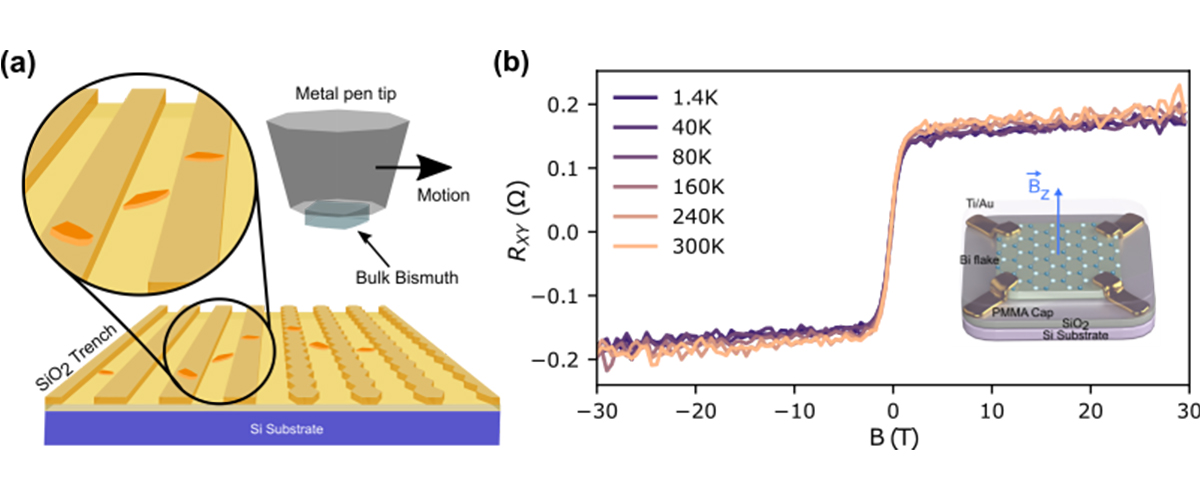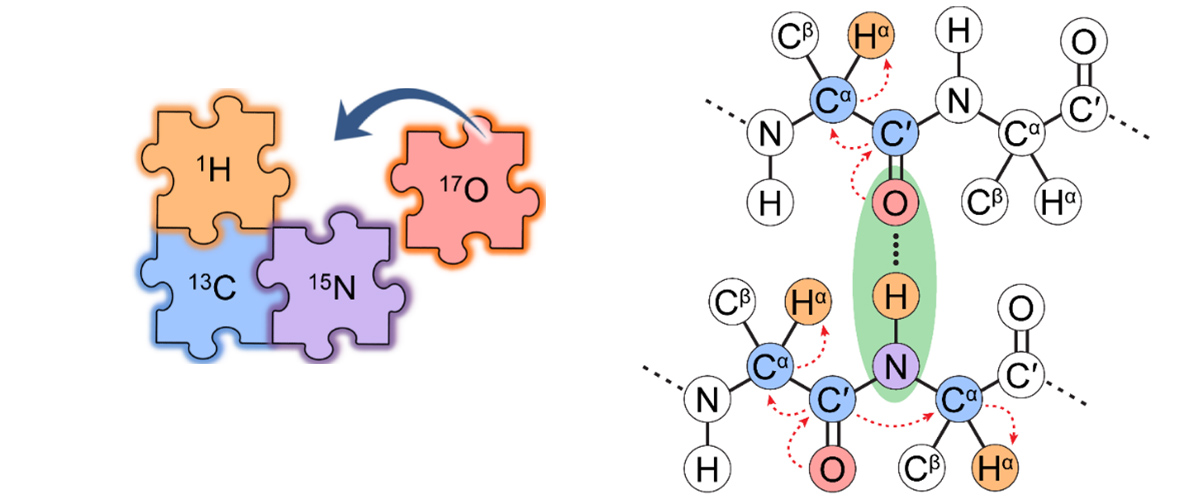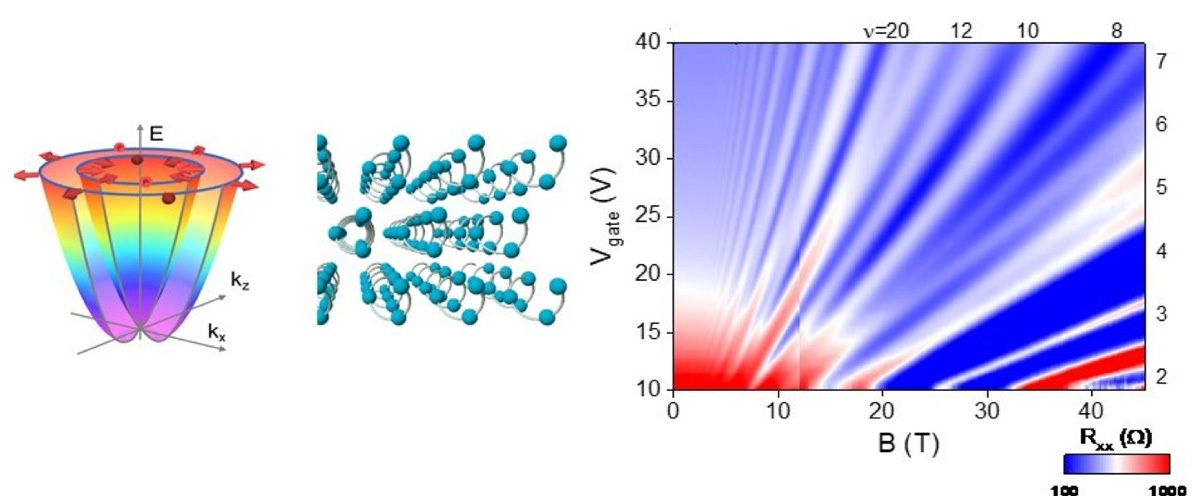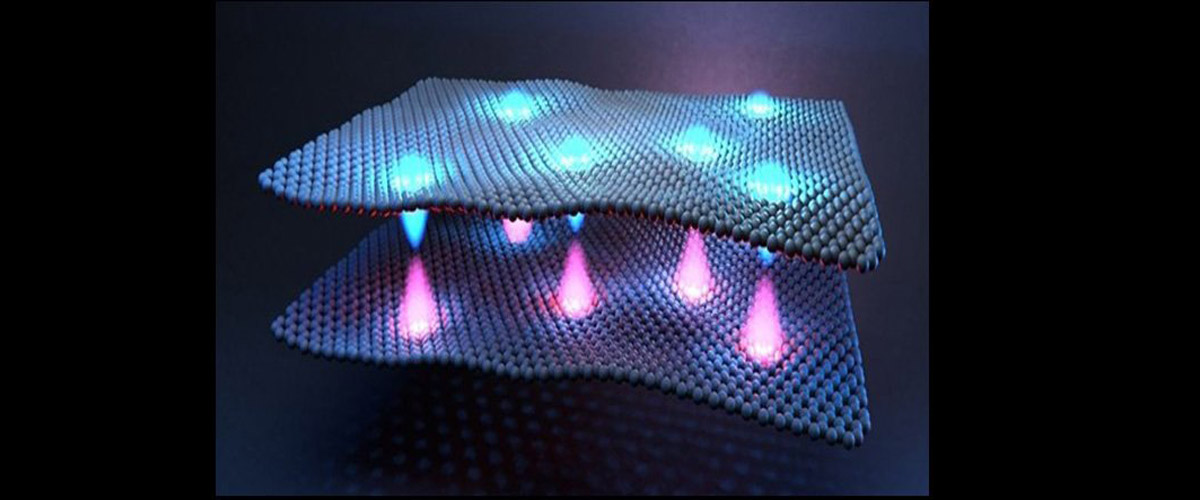What is the finding
Researchers created ultra-thin bismuth films, about 68 nanometers thick — thinner than a thousandth of a human hair — using a unique method similar to a cheese grater to shave off thin flakes. When exposed to a magnetic field, the electrical resistance in the bismuth showed an unusual behavior (called the anomalous Hall effect), which remained the same from near absolute zero to room temperature. (see Fig. 1(b)).
Why is this important?
The anomalous Hall effect shouldn’t happen in bismuth because of its magnetic properties, making this discovery unexpected. Even more puzzling is that the effect stays the same across a huge temperature range, from near absolute zero to room temperature—something never seen before. This suggests that the effect is intrinsic to bismuth and not caused by magnetic impurities. Looking ahead, bismuth could be a valuable material for exploring quantum versions of this effect and for developing biocompatible electronics, thanks to its low toxicity.
Who did the research?
Oulin Yu1, F. Boivin1, A. Silberztein1, and G. Gervais1
1Department of Physics, McGill University, Montréal, H3A 2T8, Canada
Why did they need the MagLab?
This discovery was made on a resistive 31 Tesla magnet equipped with a variable temperature insert at the MagLab’s DC Field Facility. The specialized magnet system was of fundamental importance to the discovery of temperature independence since no magnet with this field and temperature range is available at the researchers’ home laboratory.
Details for scientists
- View or download the expert-level Science Highlight, Observation of Temperature-Independent Anomalous Hall Effect in Thin Bismuth from Near Absolute Zero to 300 K Temperature
- Read the full-length publication, Observation of Temperature-Independent Anomalous Hall Effect in Thin Bismuth from Near Absolute Zero to 300K Temperature, in Physical Review Letters
Funding
This research was funded by the following grants: NSERC (Canada), FRQNT (Québec), CXC (Montréal), K. M. Amm (NSF DMR-2128556);
For more information, contact Tim Murphy.






